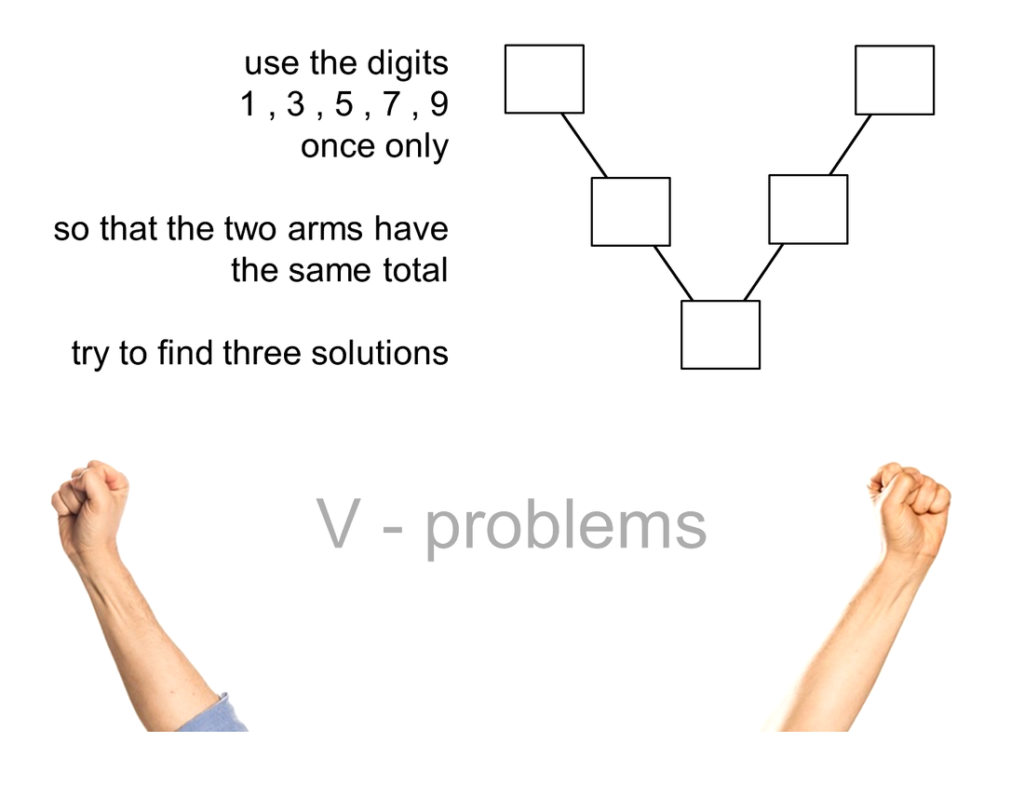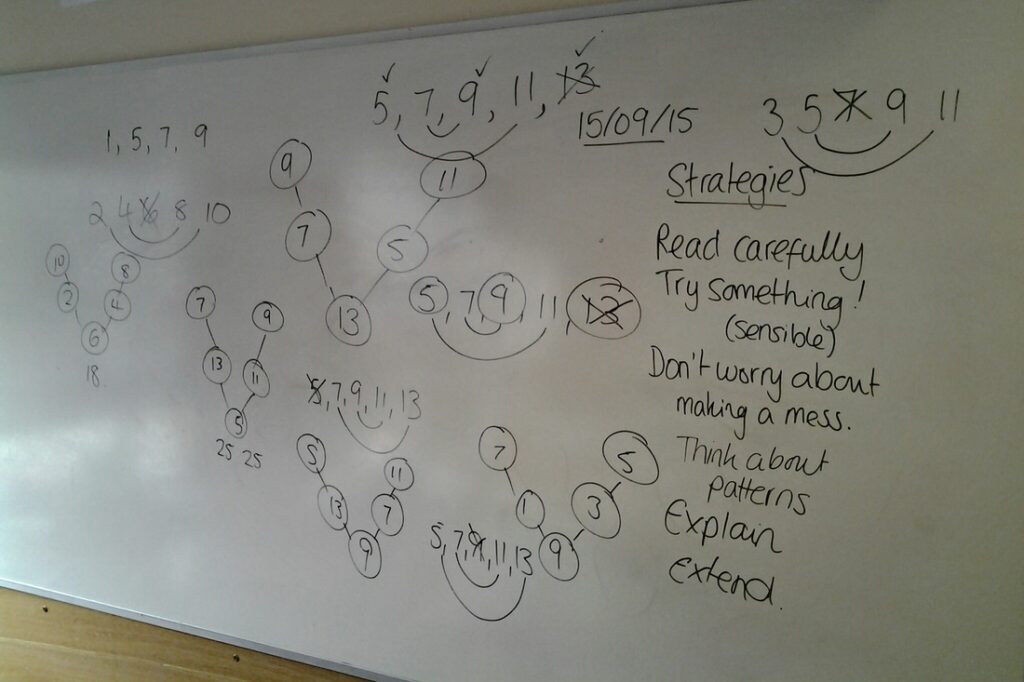We’ve moved to mixed ability with some sets across the board this year, which I’m sure will get lots of blog space as the year goes on. We’re also having a dedicated once-per-week slot for problem-solving, and I had such fun with the session I did today with Year 8 that I decided it needed to be blogged about (it will probably end up being my lesson of the week…).

I took the problem we used from Don Steward’s blog, Median – it’s called V Problems and extends quite rapidly to algebraic simplification and proof. I chose this because I already had a stack printed four-per-page as an extension puzzle from a previous lesson.
My intention had been to work through this fairly quickly, discussing the strategies used and model good problem-solving skills. However, we actually ended up spending about forty minutes on it, and some of the pupils got really engaged and involved.
I gave them all a piece of A4 plain paper for working, which seemed to free most of them up to at least try something. I got them to read the problem to themselves, then try to find a solution. Some started working straight away (putting numbers in, then checking and crossing out if it didn’t work); I encouraged those who were reluctant to start to just put the numbers in at random to get over that “blank page” panic, then see if it fit the criteria asked for.
Some pupils easily found three solutions, so I asked them to explain how their solutions worked, then think about why they couldn’t find solutions with 3 and 7 in the bottom box. Once they’d played with the numbers for about 10 minutes, I then got some up to the board to put their solutions up.

Organically, and completely unplanned (as the best lessons often are), we then ended up looking at which numbers worked in the bottom (1, 5 and 9) and which ones didn’t (3 and 7).
One pupil suggested that it was something to do with every other number, and thought that 11 wouldn’t work but 13 would. We tried it, and found that using 5, 7, 9, 11, 13 gave solutions for 5, 9 and 13 but not for 7 and 11.
Someone else suggested finding a solution by “always putting the biggest number in the bottom, then pairing the others” – I drew some “smiley faces”, and we worked out that this method would also work for the middle and start numbers. In fact, it was fine as long as we didn’t “cross the smiley lines over”.
We then went back and checked if it worked for 7 if you put it in the middle of the sequence (that’s the top right), and over to the left you can see where we checked even numbers (with about 30 seconds to go till the bell!).
I had a lot of completely unintentional fun with this, and I think most of the pupils did too. At the end of the lesson we scrunched up their A4 paper and put it in the (recycling) bin, just to emphasise that the important bit for now was having a go and making a start, and that it didn’t matter if mistakes were made.
I still found that some pupils were really reluctant to start or have a go, and quickly gave up, some of whom have been achieving highly on the content and trying some of the challenge activities in our other lessons. I got a couple “I can’t”s, so it might take a little time to break down those barriers.
I’ve been using Median problems a lot this week for challenge questions during our “content” lessons too – I’ll blog about this later in the week.